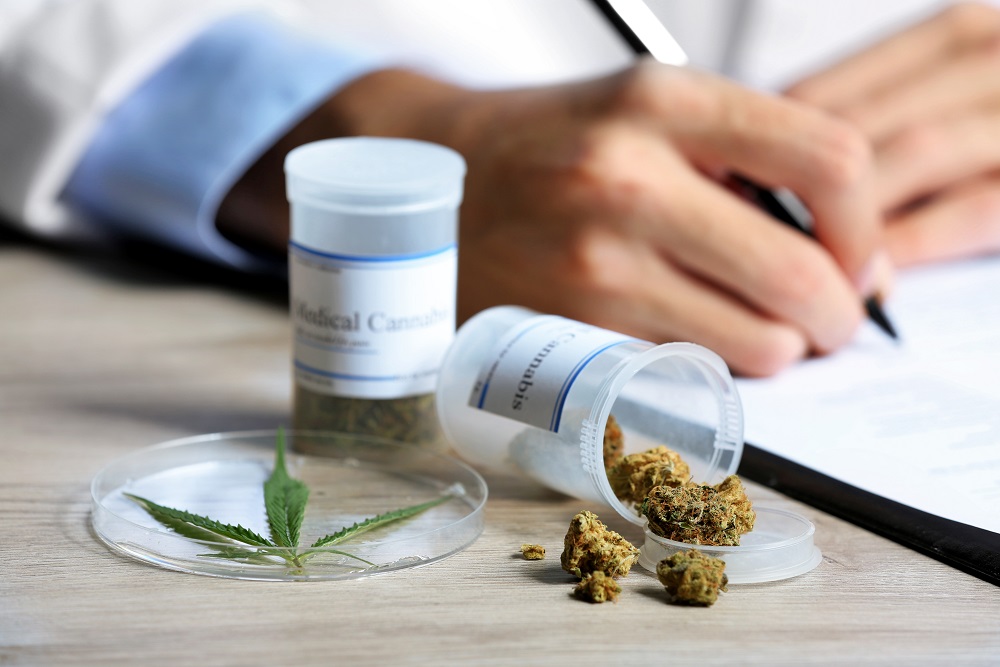Cannabis Therapies Work Best with Teamwork

Doctor writing on prescription blank and bottle with medical cannabis on table close up
We heard a lot about healthcare teams when the Affordable Care Act first became law. Experts talked about how teams would work together to improve both outcomes and patient satisfaction. They explained that a typical healthcare team would consist of doctors, nurses, social workers, patient advocates, and even administrative staff. More than a decade later, we could apply the same approach to medical cannabis houston tx.
Simply put, cannabis therapies work best when they are implemented by a team. A basic team includes the patient, their doctor (or other qualified medical professional), and the pharmacist who fills their orders. Each one has a role to play; each one has a legitimate contribution to make.
The Patient Is #1
Early discussions of healthcare teams focused on reducing hospital readmissions by improving outcomes. Linking positive outcomes to patient satisfaction led experts to recommend that patients be included as members of their own healthcare teams. It all makes sense, but it also seems so unnecessary.
Isn’t the patient always the number one priority in healthcare delivery? Of course. The patient is part of the healthcare team by virtue of being the one who ultimately makes treatment decisions – be it medical cannabis therapy or something else.
Patient input is critical to utilizing cannabis therapies to their full advantage. That’s why the state of Utah recommends patients take advantage of a free tracking journal available on their website. Patients use the journal to provide their pharmacists and medical providers critical information that tells them whether or not cannabis therapies are working.
Doctors Are Medical Experts
Doctors are part of the medical cannabis team for the simple fact that they are medical experts. They are the ones tasked with the responsibility of diagnosing a patients’ condition and determining whether or not cannabis is appropriate. In most states with medical programs, patients must follow up with doctors in order to get their medical cannabis cards renewed.
Even though doctors are medical experts, they are not pharmacology experts. Their knowledge of how the body’s various systems react to drugs is limited. That’s why our system relies on pharmacists to monitor and dispense prescription medications. It is why states like Utah require medical cannabis dispensaries to have at least one registered pharmacist on staff.
Pharmacists Are the Drug Experts
The final member of the medical cannabis team is the pharmacist. Pharmacists are trained in the science of using medications to treat illness and injury. They have the training and experience to understand how medical cannabis affects patients based on form factor, dosage, frequency, etc.
If you were to visit the Pure Utah cannabis dispensary in Payson, Utah, you would consult with the staff pharmacist before purchasing your first order. Pharmacists would have to approve subsequent orders as well. If you ever had questions on future visits, the pharmacist would be available to answer them.
Sharing the Responsibilities
One of the benefits of having doctor and pharmacist work together is the ability for them to share the responsibilities of patient care. In some states, those shared responsibilities are even a matter of law. Look at Utah once again.
State law now allows qualified medical providers to decide whether they want to consult with patients about dosage and delivery method or pass that responsibility off to the pharmacist. In either case, doctor and pharmacist share responsibility for patient care.
This is actually the way it’s supposed to be throughout Western medicine. Doctors and pharmacists are not supposed to work independent of one another. They certainly aren’t supposed to ignore patient input. Healthcare works best when teamwork is employed – even with cannabis therapies.











